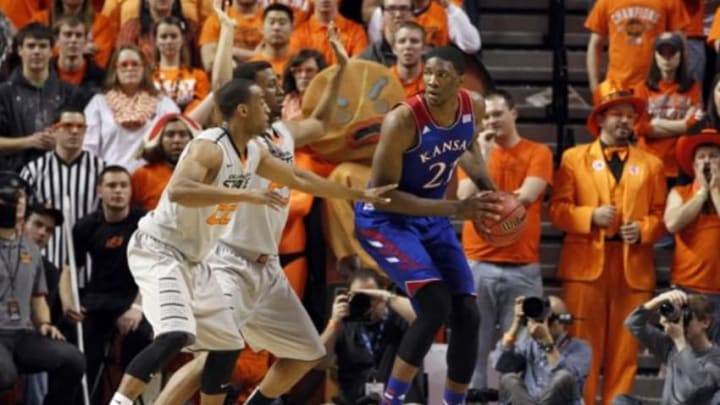After sustaining an unfortunate foot injury barely a week before he was to be taken first overall in the 2014 NBA draft, Kansas center Joel Embiid underwent successful surgery to repair a foot fracture.
"“The surgery went very well and I’m confident that after appropriate healing he will be able to return to NBA basketball,” Embiid’s surgeon, Richard Ferkel, said in a recent press release."
With no clear timetable as to when he’ll return to the court, it’s fair to say that Embiid’s position in the draft has dropped. He’s still in the top 10, but with his recent string of injuries in addition to the NBA’s history of 7-footers with health problems, it’s unclear as to where he’ll be playing (or sitting) next season.
The question to ask before inquiring into his health is at what point should a team draft Embiid? The answer depends on two factors: Whether a team has room to be hopeful, or needs immediate production.
Embiid is an impressive player, however he’s no Shaquille O’Neal or Hakeem Olajuwon, although Embiid has already stated he aspires to be in the Hall of Fame.
He’s a great defensive presence down low, and is gaining greater skill in the offensive post extremely fast. With health on his side he could easily become a league superstar.
So where do you draft Embiid, and under what set of circumstances?
The Cleveland Cavaliers will undoubtedly select Jabari Parker with their first pick. Following Parker in no particular order will be Andrew Wiggins, Dante Exum, Marcus Smart and Noah Vonleh. In light of his physical ailments, all of the aforementioned should (but some probably won’t) be selected before Embiid.
To be on the safe side, a team should look to select Embiid at the point where an injured Embiid is more talented and has more promise for a franchise rather than the remaining draftees. That’s the easiest way to operate without possible regret.
That’s a poor position to be in, but in such a deep draft, it’s better to respect history than to be overly optimistic.
From a physical standpoint, there’s reason to be skeptical of Embiid’s health in the long run.
NBA big men spend a good amount of their time in the weight room. Adding on muscle to be effective in the post is a necessity. No team wants a player that’s easily moved off the block.
As body weight increases, the pressure on joints does as well. With every pound of excess weight on the a players joints feel three times the pressure. Increased body weight in addition to the stress that the NBA season brings can be troublesome for players, especially 7-footers.
Yao Ming played at 7’6″ with 300-plus pounds. Issues with his feet plagued the Chinese native throughout his playing career, eventually forcing him into retirement. Zydrunas Ilgauskas, Sam Bowie, Greg Oden and Bill Walton also shared similar fortunes.
At 7 feet, Embiid is more of a mobile player than any of those great centers tho had careers end early due to injuries. He thrives on being able to get off of the floor quickly; springing to block shots, hammer down dunks and stepping in the lane to put his growing offensive post game on display.
Similar to Derrick Rose, Embiid’s style of play could ultimately be the demise of his career.
With a few major injuries in his last couple of seasons, Rose continues to punish his knees. The hard cuts, plants and jump stops that’s made him a league MVP and All-Star is the same style of play that can potentially sideline him again — possibly for the remainder of his NBA career.
Embiid is no exception. The team that drafts him will need to be cognizant of the fact that they have a young player, who fortunately is open to being coached.
A team won’t need to change his play style as radically as Rose, but adjustments will need to be made if Embiid or the team who drafts him is interested in a lengthy award-rich career.
On draft night it’s unfortunate that Embiid’s name won’t be called first. When health was an ally, he was a shoe in to be drafted ahead of every player. It won’t take long for his name to be called by commissioner Adam Silver.
When it is, hopefully there’s a plan for his longevity. Neither Embiid or his future employer will be able to afford the luxury of hoping everything works out.
